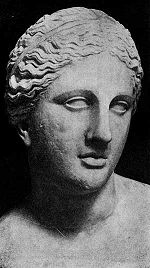“Aiori forsan cum timore sententiam in me fertis quam ego accipiam?”
(Perhaps you pronounce this sentence against me with greater fear than I receive it)
 | |
| Bronze relief by Ettore Ferrari (1845-1929), Campo de' Fiori, Rome |
 |
| Giordano Bruno |
He had been a Dominican Monk. Bruno was an absolutely brilliant man, who hungered for knowledge of religion and science. His trial by the Roman Inquisition instead force fed him pagan dogma. In retrospect, it was the Church that was tried and convicted. However, its punishment paled in comparison with that of Giordano Bruno and other Christians who suffered for daring to question ancient Greco-Roman polytheistic beliefs.
The Inquisition revealed a startling fact about the Holy See and his Church. The Roman Empire did not become Christian. Rather, Catholicism became Roman. It's not a coincidence that the Vatican remains in what once was the capital of the Caesar's Rome. It was a gift from Emperor Constantine to Pope Miltiades in 313 AD. It was not the only thing given by the Romans. Even the name "Vatican" predated Christianity.
Others had viewed the Christian world as paganized. For instance, in the “Sunna,” the Muslim Prophet Muhammed called Christians
There were other Aristotelian views which the Church embraced. For example, it also believed that there was a "universal" method of reasoning. Of course, the Church believed its reasoning was to be universally accepted - or else! The word, "catholic," means "universal."
The Inquisition revealed a startling fact about the Holy See and his Church. The Roman Empire did not become Christian. Rather, Catholicism became Roman. It's not a coincidence that the Vatican remains in what once was the capital of the Caesar's Rome. It was a gift from Emperor Constantine to Pope Miltiades in 313 AD. It was not the only thing given by the Romans. Even the name "Vatican" predated Christianity.
Others had viewed the Christian world as paganized. For instance, in the “Sunna,” the Muslim Prophet Muhammed called Christians
 |
| Aristotle -Engraved in Stone? |
During the height of the Renaissance Period, the Vatican
The Church was threatened by the Renaissance. It clung to Aristotelian thought. After all, the philosopher's belief that the world was a sphere had been proven right by the voyages of Christopher Columbus
The charge against Bruno was heresy. Ironically, the beliefs he challenged were of pagan origin. Aristotle himself would have been offended by Bruno’s 120 theses against the ancient philosopher's “natural science.” Aristotle struggled to accept the idea of a heliocentric universe, much less one in which the sun was one of a sky full of stars in an infinite universe, or that the earth revolved around the sun while rotating on its own axis. Ironically, theVatican
The charge against Bruno was heresy. Ironically, the beliefs he challenged were of pagan origin. Aristotle himself would have been offended by Bruno’s 120 theses against the ancient philosopher's “natural science.” Aristotle struggled to accept the idea of a heliocentric universe, much less one in which the sun was one of a sky full of stars in an infinite universe, or that the earth revolved around the sun while rotating on its own axis. Ironically, the
 |
| Pope Pius V |
Not all charges against Bruno’s involved science. He also was charged for having religious ideas. Unfortunately for him,.those were the province of the Church, any Church! Among other things, he questioned the notion of immaculate conception. Even today, that is heresy to many. Church dogma held that Jesus was born of a virgin birth, although Christ was quoted in the scriptures as saying he was "the Son of Man." However, scholars who translated the Gospels chose to translate the word “aalmah,” as “virgin.” The word actually meant “young woman,” and most scholars believe that Mary was less than 20 years old He was born. So, she certainly was an aalmah. That did not mean the conception of her child was immaculate.
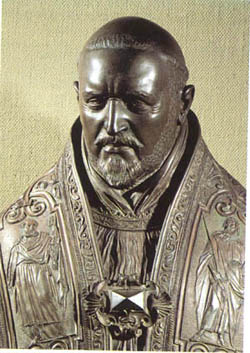 |
| Pope Paul V |
The Church intended to preserve its traditions by prosecuting anyone who questioned them. Its fear of being proved a wrong prompted Saint Peter's Church to torture and execute its followers. Even that approach was of pagan nature. Peter himself was tortured and crucified upside-down for challenging accepted religious dogma. In any event, many believe today that Jesus's gift was His Golden Rule, not an immaculate conception. To others, His birth made His death more important, for God had sacrificed His only begotten Son to cleanse the sins of humanity. Neither can be proved by science. So, instead of trying to punish those who questioned the immaculate conception, the Church could have simply pronounced that it was a matter of “Faith.”
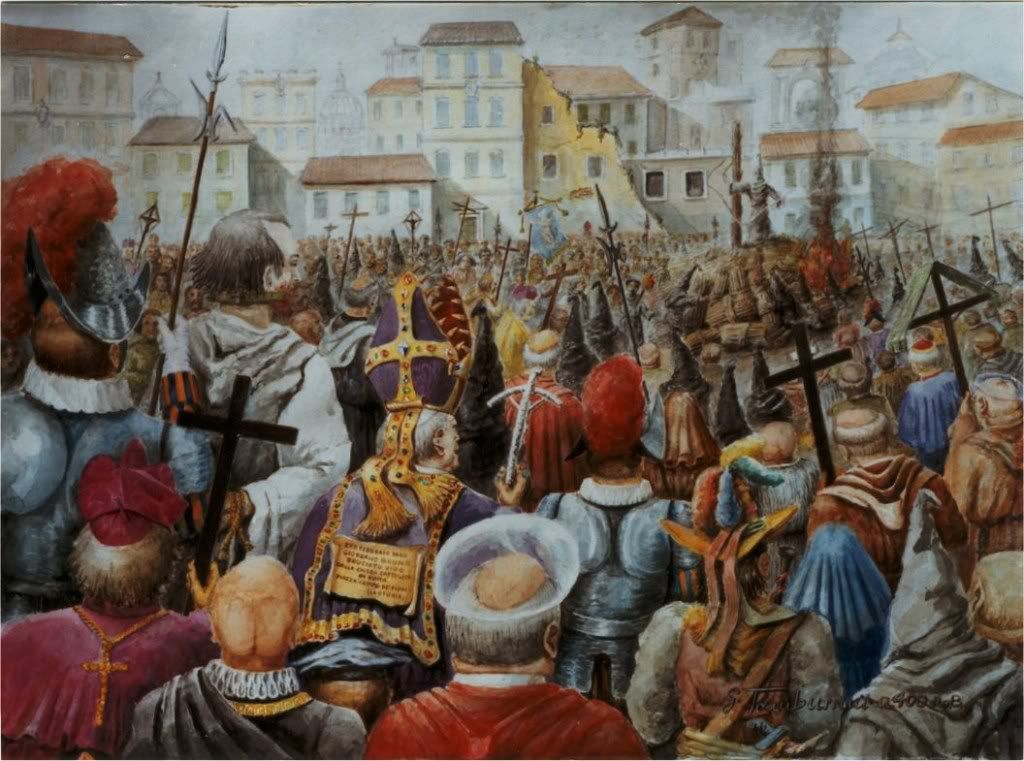 |
| The Execution of Giorgano Bruno, 1600 |
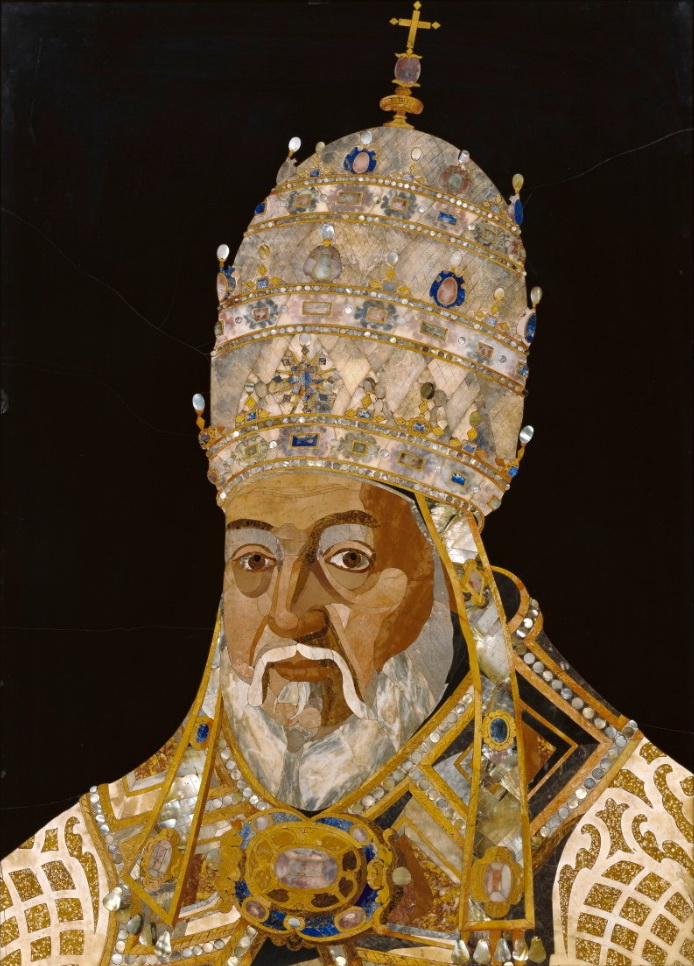 |
| Pope Clement VIII, Bruno is Guilty |
12 centuries later, the Church wished Giorgio Bruno dead. He had committed multiple offenses of TWI (Thinking While Intelligent). The Church had yet to learn that Faith and Science were not enemies. So, it treated men like Bruno as invaders. Bruno was imprisoned during his Inquisition from 1592 until it ended soon after Christmas in early 1600.
Among his Inquisitors was Cardinal Bellarmine, who later judged the works of Gallileo, and Cardinal Borhese. The latter later became Pope Paul V, who enjoined Galileo from advancing the notion of a heliocentric universe. They offered Bruno a chance to recant everything, which could have saved his life, but the stubborn Priest refused. Instead, he offered a partial recantation to Pope Clement VIII. Unfortunately, that didn't relieve the Holy Father's concerns, so he expressed himself in favor of a guilty verdict.
Bruno was declared to be a “heretic.” His Inquisitors handed him over to secular authorities for punishment, much as did the Sanhedrin with Jesus. Bruno’s reply to certain death was, “aiori forsan cum timore sententiam in me fertis quam ego accipiam."(Perhaps you pronounce this sentence against me with greater fear than I receive it).
 |
| Campo de Fiori |
Giorgano Bruno’s execution took place at a central Roman market square (Campo de' Fiori ) on February 17, 1600. He was led naked through the streets. His tongue was gagged, as a warning to anyone else who may wish to speak freely. The former Dominican Priest was hung upside down and fastened to a stake surrounded by wood and kindle. It is said that he did not have a friend among the crowd who gathered to watch him roasted to death. There were no concerns about capital punishment in those days and no appeal. His death was designed to be painful and humiliating.
400 years later, the Church remains unrepentant. Cardinal Angelo Sodano declared Bruno's death to be a "sad episode," but he defended the Inquisitors. He said they acted properly. The clerical party in Rome sharply opposed a proposed monument for Bruno at the site of his execution, but the monument was finally erected by the
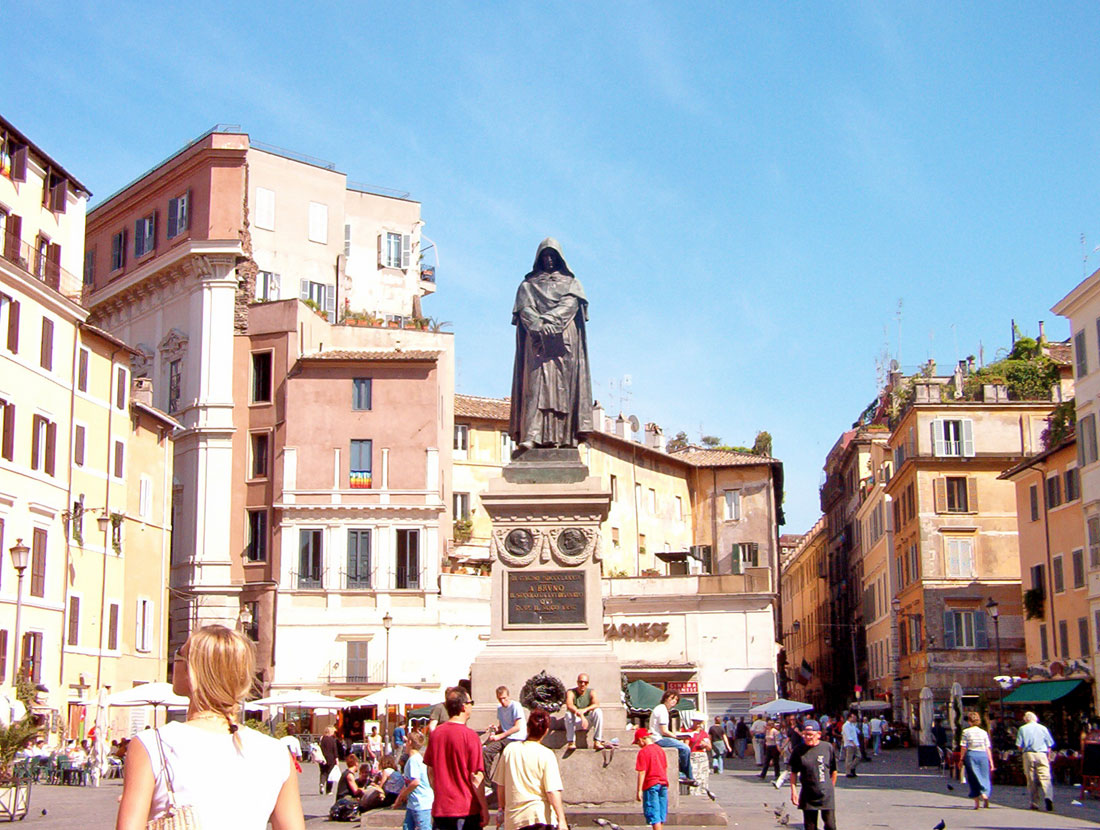 |
| Monument of Giordano Bruno |






